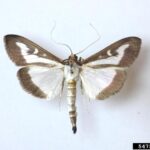Main Content
Written by Mousumi P., Somerset County Rutgers Master Gardener The Somerset County Rutgers Master Gardener Helpline has been getting many inquiries lately about Boxwoods. Boxwoods, with its many species and cultivars, are broad-leaved evergreen shrubs mostly used as foundation planting and backdrops for planting beds and formal gardens. Unfortunately they are often susceptible to several […]



